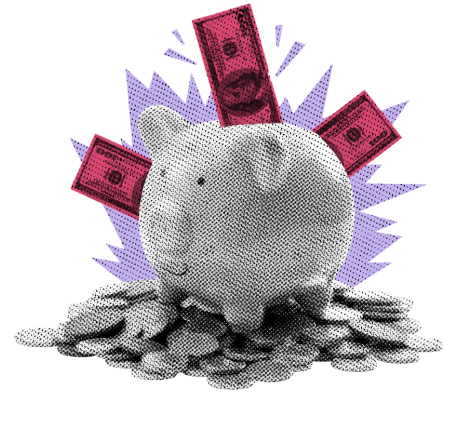
Stocks rallied yesterday as investors picked through last week’s wreckage in search of bargains – some were found. Market volatility is the name of the game in this vacuum ahead of key inflation figures and next week’s FOMC; it is the cost of doing business.
Can I just get a break? What’s your favorite stock? Chances are, that stock is the one that has performed best for you in the past year. If it isn’t, it is probably one that you bought several years ago hoping that it would grow into a behemoth someday, and indeed it has. In either case, that favorite stock is most likely a growth stock, and there is a pretty good chance that it is in either the tech sector or in the biotech industry. It’s ok, there is no shame in making great returns on a stock that everyone loves. Is there a stock that you don’t own but you wished you owned as you watched it rally by triple digits in a single year? You watched and waited for an opportunity to get in, but its burgeoning growth kept that opportunity elusive. You endured all your friends AND YOUR FAVORITE MARKET COMMENTATOR 😉 write about it constantly. When finally, the stock pulled back, it seemed so extreme that you lost your appetite. You are wondering, “why can’t I just get a break?”
I have covered this a number of times and will likely cover it many times in the future, but it is so important, so here we go. The cost for great potential returns is the assumption of risk. Go on, read it again. I can translate this quite simply to you as follows: if you want your returns to be greater than the S&P500, you have to take on risk that is greater than the S&P500. Plain and simple. Accept it. Let’s leave that there. Now, building on that, let us look at a good example of that stock that I was talking about in the last paragraph. You know where this is going. But first, a disclaimer. I am not recommending this stock. I talk about it often because it is a good representation of a growth stock, and it is top of mind for most of us. I quite literally hear people talking about it on the subway almost every day. It is therefore a good example. What stock am I thinking of? [cue Jeopardy music] Of course, I am thinking of NVIDIA.
NVIDIA has returned +115% year to date, +133.63% in the past year, and +640% in the past 2 years. +640 percent! Over that same period, the S&P500 earned +38.77% (including dividends); that is a pretty good return, but compared to NVIDIA, it seems rather paltry. Going back to my last paragraph, that great return comes at a cost. And that cost is… risk! “What do you mean by risk, Mark,” you enquire? How about a -26% decline in just a month between the beginning of July through the beginning of August. Ouch. But don’t worry, it rallied right after that, gaining +31% in just 8 trading days… only to drop by -18% since hitting a recent high in late August. That, my friends is volatility, or how much of Wall Street defines risk. The S&P500 fell, rallied back, and fell during that period as well, but the numbers were not nearly as extreme. For instance, that first big drop was only about -8% for the S&P, which is nothing compared to the -18% drop for NVIDIA. By now, you should be nodding your head, understanding that the risk premium that you pay for NVIDIA over the market affords you the possibility of those great, better-than-market returns. Got it? Of course, you do.
Many of you have probably heard about Beta. You can get it on just about any financial website of your choice. You may know that it is some sort of measure of volatility. Well, technically, Beta is actually a measure of a stock's volatility relative to the overall market, indicating how much the stock tends to move compared to market fluctuations. If a stock has a beta of say 0.5, then it is less volatile then the S&P500… in fact ½ as volatile, so, if the market moves up by +1%, the stock will only gain +0.5%. Buckle up, here comes the quick, BUT FREE lecture on Beta. Here is the formula (don’t get hung up on it, just check it out):
β = Covariance (Returns of a stock and the market) / Variance (return of the market)
Simple right? Ok, you can calculate this by hand, but I don’t recommend it. You can calculate it using Excel, if you are so inclined. My favorite method is to use a programming language called R. My academic friends are probably shaking their heads right now 😉. I would show you the code, which is quite simple, but you don’t need to do it, because I will (you can call me for it). For our example company NVIDIA, I simply downloaded the closes for the stock and the S&P500 ETF (SPY) since 2022, calculated log returns, and ran an ordinary least squares (OLS) regression. The results show that there is a really close relationship between the S&P and NVIDIA, which makes sense given that NVIDIA is not only part of the S&P, but also, more recently in the top three by weight. It also means, that we can be confident in our results. Those results show a Beta of 2.27. If you have been following me, 1) you get an A for effort, and 2) you would instantly know that NVIDIA is very volatile compared to the S&P500. In fact, it is 2.27 times as volatile. So, if the S&P goes up by +1%, then NVIDA is likely to go up by +2.27%. AND VICE VERSA, BECAUSE VOLATILITY WORKS IN BOTH DIRECTIONS. It is your best friend when a stock is going up… and your worst nemesis when the stock is going down.
You may have known about Beta, and you may even consider it when buying stocks. Hopefully, now, you know exactly what it means, how to calculate it, and why NVIDIA seems to be so much more volatile than the S&P500. You also know that that volatility is the cost, or risk you must assume, for the possibility of making… 2.27 times greater returns than the market. Class is dismissed.
YESTERDAY’S MARKETS

NEXT UP
- NFIB Small Business Optimism (August) missed economists’ estimates, coming in at 91.2, markedly lower than last month’s reading of 93.7.
- Fed speakers today Michael Barr and Michele Bowman.
- After the closing bell earnings: GameStop and Dave & Busters
.png)

